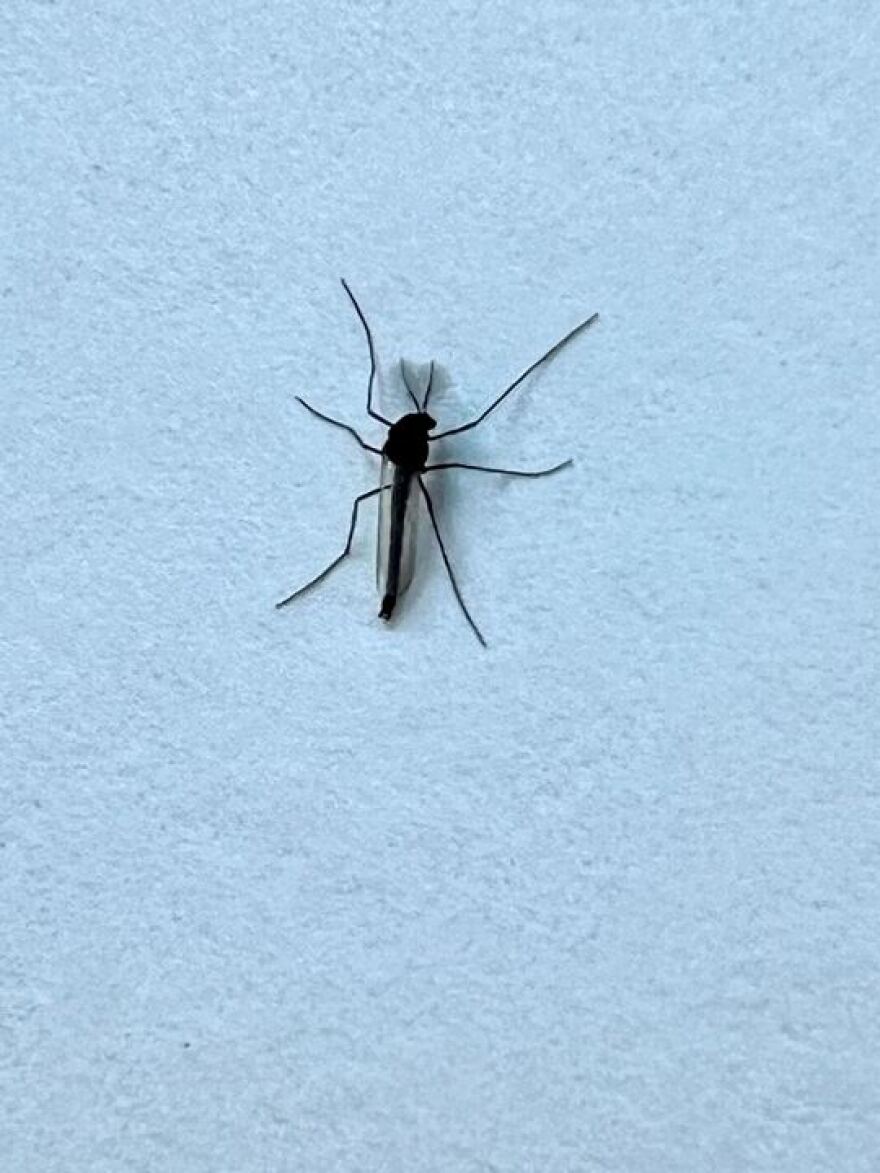BETHLEHEM, Pa. — Bigger than a gnat but smaller than a mosquito, swarms of flying insects have descended on the Lehigh Valley.
- Non-biting midge fly swarms have been spotted in Bethlehem
- The insects don't pose a threat to residents, but can be a nuisance
- Swarms commonly appear in late March and early April
They’re non-biting midge flies, also known as chironomids, an umbrella term for thousands of different species. They have other names, too, like “blind mosquitoes” because they look similar, but do not bite, or “fuzzy bills” because of the male’s bushy antennae.
Midges are aquatic insects “found in swift moving streams, deep slow moving rivers, stagnant ditches and in lakes and ponds that are rich in decomposing organic matter,” according to the NC State Extension.
It makes sense, then, that parts of Bethlehem near the Lehigh River would be inundated by the swarming insects. While masses of them flying in tight clouds might be intimidating, they’re harmless to residents.
These insects, as their name suggests, do not bite or sting, but do cause an annoyance with their sheer numbers. They seem to have an innate ability to find your eyes and mouth as you hike but otherwise are quite harmless.Officials at the Merrill Creek Reservoir in Warren County, New Jersey.
“These insects, as their name suggests, do not bite or sting, but do cause an annoyance with their sheer numbers,” according to officials at the Merrill Creek Reservoir in Warren County, NJ. “They seem to have an innate ability to find your eyes and mouth as you hike but otherwise are quite harmless.”
Midges serve an important purpose in the environment, acting as a food source for fish, birds, bats and aquatic insects. The larvae also work to “clean” the aquatic environment by consuming and recycling organic debris, according to the NC State Extension.
“They somewhat resemble aquatic earthworms, but there is a capsule-like head that is distinct from the thorax,” state Game Commission officials posted to the agency's Facebook account in 2018, alongside a photo of midge larvae. “There are two pairs of prolegs on the bottom of the body, one pair on the first segment of the thorax and one pair on the last segment of the abdomen. Some are bright red throughout their bodies when they are alive. They can also be white to dark green.”
Once they reach adulthood, midges live an average of three to five days. The adults emerge in large numbers, typically in late March or early April, and can be a nuisance to homeowners throughout warmer months.
“The adults are weak flyers and may fly or be blown ashore where they congregate on vegetation, under porch alcoves in carports and on walls of homes and other buildings,” according to the NC State Extension. “Swarms of adults may be so dense that they interfere with outdoor activities and stain walls, cars and other surfaces upon which they rest.”
“Newly emerged adults have a short time to find mates, and dense swarms function like singles bars...”A 2016 Northern Woods report
And the reason they swarm? Mating.
“Newly emerged adults have a short time to find mates, and dense swarms function like singles bars,” according to a 2016 Northern Woods report. “ … Non-biting midge swarms will persist as long as the weather is warm enough for fly muscles to flap fly wings. Some species hatch early in the season, some later. There are species that hatch once per year; others can produce two or more generations in a season.”


